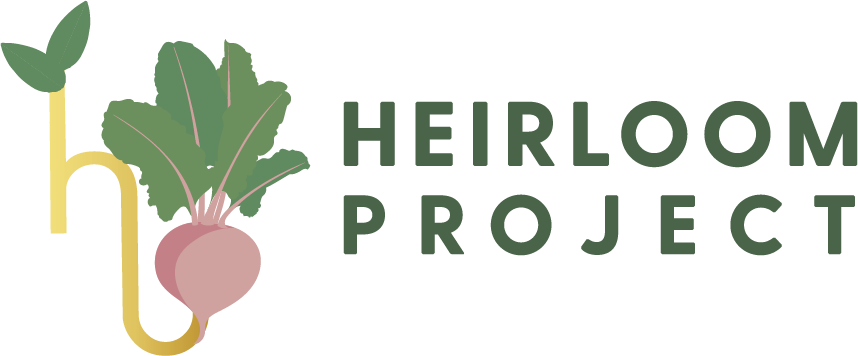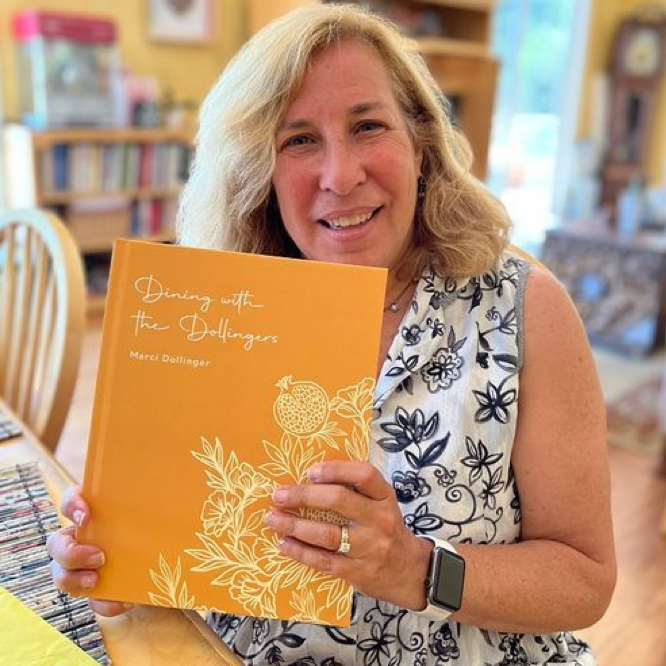By: Amber Robertson Featuring: Dimple Jashnani, Kaajal Agnani and Tina Stewart
In a heartwarming endeavor to preserve shared family recipes, culinary traditions and their cherished heritage, three sisters—Dimple, Kaajal and Tina—embarked on a remarkable journey. Their mission? To find the most effective method to collect their family’s heirloom recipes, capturing them in a way that could be shared with family, friends and future generations.
The sisters as they refer to each other are not biological sisters. Dimple, the eldest of the three, is the cousin of Kaajal and Tina, who are biological sisters. Kaajal and Tina were born and raised in the United States, while Dimple grew up in India. Regardless of the physical distance that may have separated them at times, the women recall spending countless summers and holidays between their two houses which contributed to their closeness. Today, they share an unbreakable bond and shared memories that truly binds them together as sisters.
As they got older, the three continued to bond by sharing their experiences in the kitchen as they prepared meals for their own respective families. “We [were] spending more time in the kitchen and experimenting with different recipes, and it became very natural for us to text recipes over and share pictures of the things that we made,” says Tina.
Around 2019, Kaajal, Tina and their youngest sister Karishma, were having a conversation about how they did not know how to cook Indian and Sindhi recipes––dishes that tied them to their ancestors. They also became concerned that the recipes and traditions they came to know as kids would be lost to their own children unless they found a way to preserve them.
“It started as a project for us to learn and document traditional and new recipes as a fun, family project that we can all work together on,” says Kaajal. “We launched an effort to create a website that has Sindhi and Indian recipes, as well as new recipes we had discovered. It gave us more opportunities to share and bond through our favorite thing – food!”
The Family Tiffin Project, as the ladies named the blog, was an opportunity to bring together their families who were spread across different continents and time zones. The project derives its name after tiffins, stackable steel containers used for afternoon snacks that embrace an array of flavors, from sweet to savory. These containers, akin to a South Asian lunch box, provide a compact, portable, homemade meal to those going to work.
“I would see hundreds of thousands of people get their lunch delivered this way,” says Dimple. “I would see these men carrying big baskets of silver tiffins. It was the perfect amalgamation of a little bit of sweet, a little bit of savory, it’s the perfect lunch. Tiffin just stuck in my head and that’s how the name came about.”
Dimple, Kaajal and Tina also come from a large family. Their mothers, who are biological sisters, have six other siblings. Then of course, you would need to include the children of their aunts and uncles, the cousins and the grandkids. Last but not least, each of the women had their own extended families, so it made sense to include them as well.
It was a true multicultural blend of individuals and recipes—Panamanian, American, Mexican, Indian. Each dish that would be featured within The Family Tiffin Project would encapsulate the heart of their diverse family, a testament to the fusion of flavors that celebrate their unique cultural tapestry.
The project was one that would take a lot of time and effort to coordinate. However, as project managers, the sisters knew it was a task they could handle. After building excitement and buy-in from the families, the three mapped out the details of how they would collect all the recipes. Recipe templates and instructions were developed. In addition, the families were broken down into primary groups and subgroups.
“We designated five point people to be in charge of a subgroup of family members, to hold them accountable to getting their recipes and content,” says Tina. “It took quite a few months to do just this since we wanted to capture footage of them actually making the dish.”
Soon enough, they had a good start on recipes and content that they could start posting on the blog. However, as with any massive project, there are bound to be a few bumps along the way. For some, the templates were easy to use and populate, but for those who weren’t as tech savvy, they needed a little more hand holding. For other family members, their recipes had been made for years and were embedded in their minds—dishes they made out of habit, without a list of ingredients and steps.
“My aunt sent me this recipe and was like take bread, take this, do this and put it together,” recalls Dimple. “I told her I need actual measurements and she was like, ‘I never measure, I just put stuff in, you know it’s a pinch of this and this.’ So, I had to actually work with her on narrowing it down to as much as possible.”
Thankfully, Dimple’s mom loved projects like this. She volunteered to remake dishes, test the measurements and would write down the ingredients and directions to ensure the recipe was correct.
The blog started off great, with regular recipe posts and videos, but the sisters admitted it was a lot of work. They also started noticing that some folks were not using the blog as they had expected and eventually the trio stopped maintaining it.
First and foremost, let’s start with a mental checklist – where are all your recipes stored?
Crafting A Family Cookbook

The foundation of a treasured family heirloom cookbook coincided with the arrival of Sri into their lives two years ago. It was serendipity at play, aligning with their original blog concept.
Discussing the vital act of sharing family recipes beyond familial bounds, the trio recognized the profound significance and importance of documenting their culinary treasures. Some of these recipes, adored since their childhood, reflect their own journey and how they learned to cook, starting with simple tasks and gradually expanding their skills.
For Tina and Kaajal, they recall their mom encouraging them to help in the kitchen at a young age. She would task them to roll rotis, wash rice, shell peas and dice veggies. Eventually, the delegation turned into personal curiosity and the girls wanting to learn more on their own accord.
Things were different growing up in India for Dimple. She was encouraged to stay out of the kitchen. If she needed anything, even a glass of milk, her mom would get it for her. It wasn’t until Dimple was at her aunt’s house, that she approached her aunt and asked if she would teach her how to cook. Her aunt enthusiastically agreed.
Highlighting their culture, telling the stories of their family and traditions, and noting how they deserve to be passed down to the forthcoming generations was another push to create a cookbook.
“I think for our children, we wanted to make sure that we don’t lose sight of the culture and it was an easy way to introduce our children and our future generations to these recipes, and even to remind ourselves of our culture and traditions.” shares Kaajal.
For the sisters, it was important for them to also include Sindhi recipes as they are descendants of Sindh – a separate province within the original India subcontinent. After the Partition of India in 1947, the region was divided with Sindh becoming what is now Pakistan. Dimple, Kaajal and Tina’s ancestors would eventually become refugees in India, before they dispersed to other parts of the world.
A Collection Of Recipes Across Generations And Cultures

Although they were familiar with the process of collecting recipes based on their previous digital endeavor, a cookbook still presented new challenges. With a blog, you can continue to add new recipes but with a cookbook, the sisters really needed to narrow down which recipes to feature. In addition, they really wanted to celebrate the diversity of the family and had to think through the best way to highlight it.
Their book, The Family Tiffin, starts with a focus on the family, as it should. Featured within the first four pages are headshots that showcase each of the 35 recipe contributors, some solo, some coupled. Within the book, you also find a detailed family tree that starts with the sister’s grandparents, before segmenting out the eight families. Dimple, Kaajal and Tina make up the third tier, with the tree wrapping up with their children and extended family members on the fourth and fifth tiers. Laced throughout the book are older and current photos of family moments, gatherings and grandkids.
With the diversity of recipes featured in their book, it made sense to start with a list of spices, four columns to be exact. The book is then divided into fairly traditional sections, starting with a variety of breads, then condiments and dips, before it segments out into appetizers, sides, main dishes and desserts.
Each dish featured within The Family Tiffin encapsulates the heart of their diverse heritage—a testament to the fusion of flavors that celebrate their unique cultural tapestry. Alongside each recipe, you’ll find the recipe contributor and an accompanying drool-worthy image of the dish.
When asked to pick a standout recipe, the sisters take their time before collectively agreeing on Kaajal and Tina’s mom’s famous guacamole, which is always the star during the Fourth of July and other family gatherings. For Dimple, Bhindi Masala also comes to mind, “That was the first thing I ever made, and the story is highlighted in the cookbook.”
One of Tina’s standout recipes is one that made its way into the cookbook through her husband’s side of the family––Stewart Louisiana Seafood and Sausage Gumbo––an authentic Lousiana-Creole recipe.
“So, my father-in-law, Darrell Stewart, learned this gumbo recipe from his grandmother, Aurelia Stewart,” says Tina. “Whenever there’s a big family gathering to this day, all the cousins, aunts, uncles come over and fill their bowls as we sit and laugh and just eat together. It takes like the whole day to make and it’s truly made with so much love, and I just appreciate that he does that for everyone.”
As the sisters reflect on their journey to capture recipes, a sense of nostalgia has been a steadfast companion. It’s taken them down memory lane, sparking conversations with cherished aunts and unearthing stories behind the recipes. Notably, a poignant chat with Dimple’s mother-in-law about her recipe stirred profound emotions. Her culinary creation, intertwined with her partition-era experiences and the Hindu-Muslim riots in Pakistan, evoked memories far beyond taste.
The essence of The Family Tiffin lies in uniting their globally dispersed family through the love of food. It serves as a conduit for tradition intertwined with modern, creative innovations. As The Family Tiffin unfolds its pages, it captures more than culinary delights––it preserves the stories, emotions and cultures that bind people together through food.
Ready to create your own custom cookbook? Shop now
Have more questions? Visit our FAQ section here. Alternatively, you can email us at hello@heirloomproject.co
To get regular updates, follow us on Instagram here





Leave a comment
Your email address will not be published. Required fields are marked *